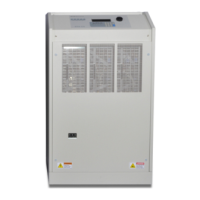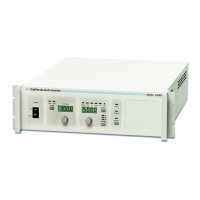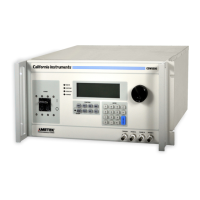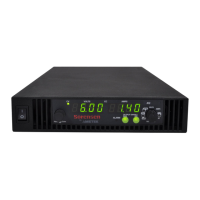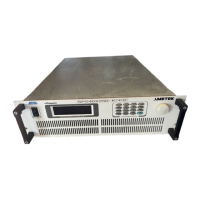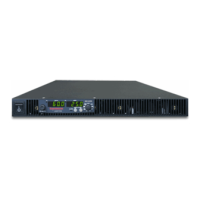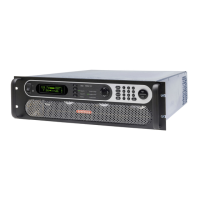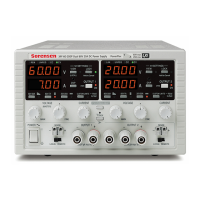User Manual AMETEK Programmable Power
RS Series 160
determine if this is the case, the cover of the amplifier has to be removed. Contact customer
service service.ppd@ametek.com before attempting to diagnose on your own.
PFC failure denotes one or all three of the IGBT power modules on the large PFC heat sink
have shorted, and damaged the devices. This type of failure is sometimes accompanied by a
popping sound as the large PFC power devices give out. To diagnose this failure mode, the
amplifiers must be removed and the cover removed for inspection.
If there is any sign of damage, the PFC power devices must be replaced. If not, they need to be
checked for continuity using a DMM or diode checker.
In case of a PFC failure, older generation PFC control boards (7003-705 or 7003-712) may have
sustained damaged in the isolated gate drive section of the board and the board itself may have
to be replaced. RS Systems with later generation 7003-716 PFC control boards generally will
only require replacement of the 2A gate fuses to restore functionality.
If the PFC section looks intact, one of the output amplifier switches may have shorted.
The usual scenario is one or two of the IGBT switch devices on one of the 4 heat sinks get
shorted. Usually if the B+ device is failed, the B- device will also short. When these devices
short, one or more of the 30A fuses (F1 through F8) on the DC power distribution board will be
open.
An amplifier device failure is not audible at all so there may be no indication of this other than
checking as follows:
1. Measure the output voltage with Zero AC volts programmed.
2. Remove any EUT from the output connections.
3. Turn output ON and measure the AC and DC output. It should be close to zero.
4. If the output reads –225VDC on the low range and close to 0 Vdc on the high range, then it
is almost certain that the fuse is blown and 1 or 2 IGBT devices are shorted.
Note that the measurement screen will not report the DC faulty output voltage in the AC mode,
as the measurements in this mode are AC coupled. Therefore, it is necessary to measure at the
output terminals with a DMM to determine the actual output. Alternatively, the RS can be
switched to AC+DC mode in which case the internal measurements can be used instead.
If it is determined that it is an amplifier failure, the affected power MOSFET’s need to be
replaced. If no local service support is available, the amplifier may be exchanged completely.
Contact customer service service.ppd@ametek.com for module exchange information.
7.5 Factory Assistance
If the problem with the cabinet or one of the power modules cannot be isolated, contact the
factory for assistance.
